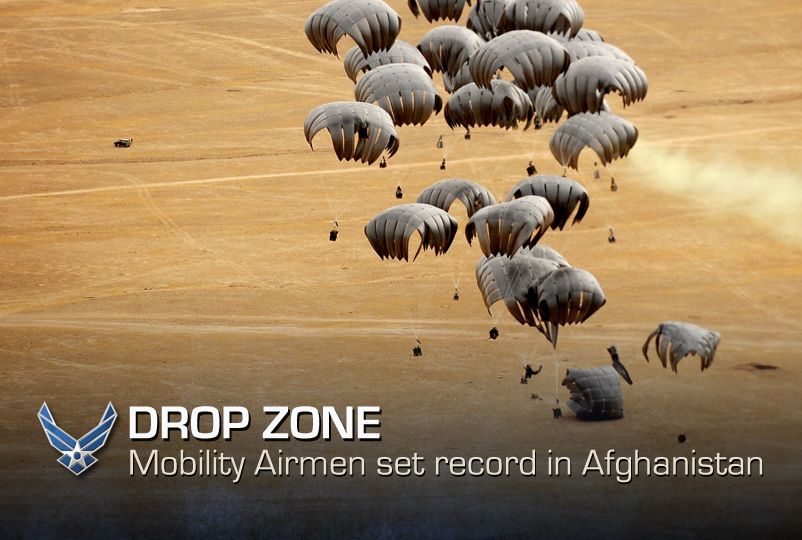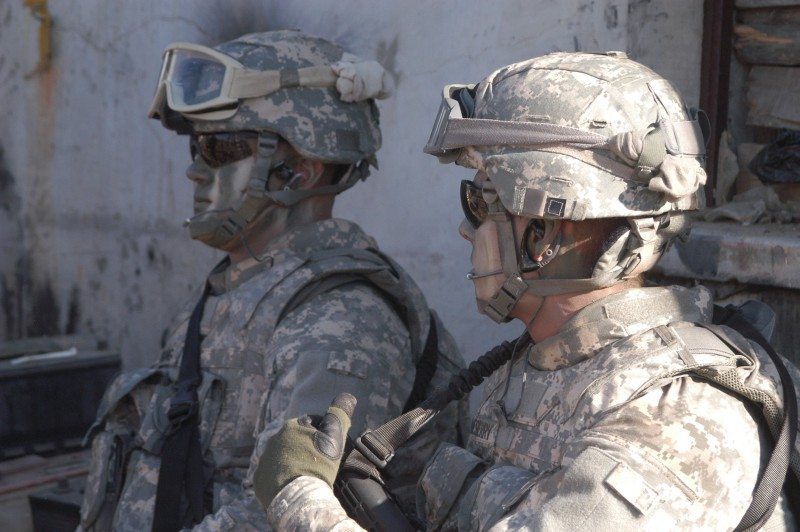In 2011, mobility Airmen delivering airdrops reached a new annual record with 75,956,235 pounds of cargo delivered. That’s nearly 16 million more pounds delivered than the previous record set in 2010 of 60,400,000.
At more than 75.9 million pounds – that’s the equivalent of standing on a mountain top and watching 553 Army M1 Abrams tanks — or even 11,868 Chevrolet Silverado trucks — floating down from the sky with parachutes to a landing zone.
The record number, as recorded by Air Forces Central’s Combined Air Operations Center at a non-disclosed base in Southwest Asia, is also larger than the total number of pounds delivered in Afghanistan by airdrop from 2006 to 2009 which combined is 60,525,969 pounds.
On average mobility Airmen airdropped 6,329,686 pounds of cargo each month in 2011. Mobility Airmen completing the airdrops flew C-130 Hercules and C-17 Globemaster III aircraft from various deployed bases. They also completed the airdrops in various forms – from the the use of the traditional Container Delivery System, or CDS, bundles to the Joint Precision Airdrop System, or JPADS.
In November 2011, one U.S. Army discussed the importance of airdrops and how good they are getting after receiving a JPADS airdrop at Combat Outpost Herrera.
“I was real skeptical (of JPADS) at first,” said Army Capt. Brandon Kimbrel, COP Herrera commander, in a Nov. 27 report by Staff Sgt. David Salanitri and Senior Airman Patrick McKenna of U.S. Air Forces Central Public Affairs in Southwest Asia. “After the drop, I was real impressed. We didn’t see or hear the ‘bird’ at all. All of a sudden, we looked up and saw parachutes above us.”
In the same AFCENT Public Affairs report, Army Staff Sgt. Denton Poe, 1st platoon sergeant at COP Herrera, said airdrops are vital.
“We’re surrounded by mountains — the snow sets in. The helicopter passes are impassible by helicopter and the roads could be clogged up,” Poe said in the report. “Utilizing airdrops with the GPS-guided parachutes allows us that avenue to use in case we can’t get resupplied by helicopters or vehicles by the road, which is a typical case come winter here.”
Perfecting the use of airdrops for combat resupply as well as for humanitarian purposes continues to grow in the Air Force. In July 2011, Air Mobility Command led an international communication effort by holding the first International Airdrop Symposium at Joint Base Lewis-McChord, Wash.
According to Maj. Patrick Linson, symposium chairperson from St. Joseph, Mo., where he serves as a combat tactics instructor in the Advanced Airlift Tactics Training Center, or AATTC, the symposium was important “to build international partnerships in the airdrop and airlift communities.”
The goal of the organizers, Linson said, was to have participating international partners share their ideas and techniques. For the Air Force, the lessons learned from Afghanistan airdrops were particularly important.
“Sharing these techniques was naturally beneficial to all involved,” Linson added.
Numbers aside, the most important factor behind the high number of airdrops may be the possible lives saved by keeping convoys off the road in the remote, land-locked areas of Afghanistan and the future potential for Air Force airdrop operations.
(Air Forces Central Public Affairs contributed to this report.)











